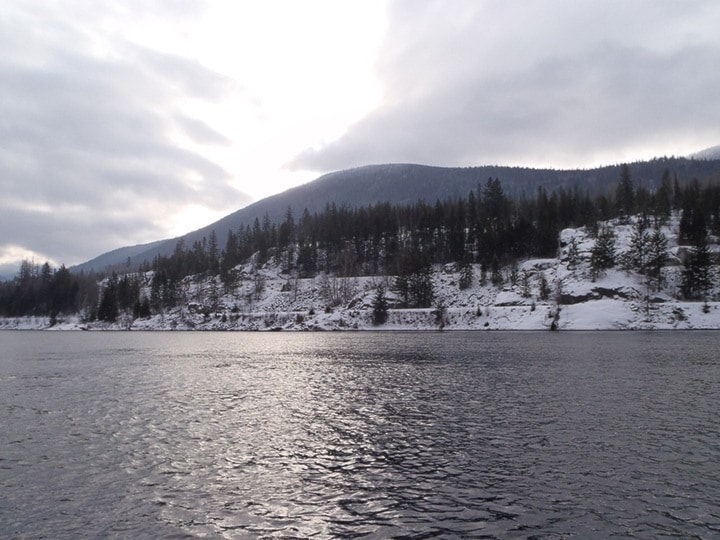BC Hydro has concluded that added energy benefits from opening up the bottleneck at Grohman Narrows on Kootenay Lake’s West Arm would just about pay for the excavation required — but lots of uncertainty remains around the project’s impacts.
“It’s not something we would automatically do,” systems manager Kelvin Ketchum told 103.5 The Bridge. “A decision has to be made whether to go to the next phase. Right now we’re looking for either support or opposition.”
The project is primarily intended to provide greater flood control to avoid the sort of damage that occurs during heavy rainfall years such as 2012 when Kootenay Lake saw its highest levels in almost 40 years.
Grohman Narrows, about five kilometres west of Nelson, restricts the amount of water that passes down the Kootenay River between March and July. Hydro estimates deepening the channel along a two-kilometre stretch could reduce peak lake levels by 0.7 to two feet (0.2 to 0.6 meters).
Since the last public meeting in June, engineering studies have been completed looking at three potential excavation scenarios, which are expected to cost from $28 million to $68 million.
The median option calls for the removal of about 300,000 cubic meters, mostly from the bottom of the channel. There isn’t expected to be much impact on the sides, Ketchum said. “The bedrock levels are quite low, well below the level of excavation. It’s not like we have to blast bedrock. It’s removal of overburden.”
Although there would be some energy benefits to downstream generating stations, including BC Hydro’s Kootenay Canal, they would be largely cancelled out by the cost of dredging.
Concerns have been raised about the effect on downstream residents, but Ketchum said while they’re looking at reducing the lake’s peak levels, that won’t necessarily result in increased flows, because they will have more control over water releases during freshet.
He also said while no environmental show stoppers have so far emerged, there may be some identified in the project’s next phase, such as the impact on white sturgeon spawning in the lake’s south arm.
He emphasized that even if they do move ahead, any actual excavation is still two to three years away. “There’s no deadline for the decision, but I think we’d like to make it in the next few months,” he said. “It’s a project with low return and lots of uncertainty. We’d like to make a rational decision that’s best for everybody.”
BC Hydro spokeswoman Sabrina Locicero said a public meeting last Thursday in Nelson to discuss the work to date drew more than 70 people, including both upstream and downstream residents, and representatives of outdoors and recreational groups.
“We got some thoughtful questions and feedback,” she told the radio station. “They wanted to know what kind of impact the project would have on water levels, on erosion, and what would happen with archaeological sites.”
Locicero said while they provided some of those answers, others would be addressed in the project’s next phase if it moves forward. She also said further meetings are planned with First Nations, regulators, and elected officials before the Crown corporation decides whether the project is viable.
The push for BC Hydro to look at dredging, last done in the 1930s and ‘40s, came from residents affected by flooding in recent years as well as local governments. However, it has been criticized by other residents who suggest it will do more harm than good.
